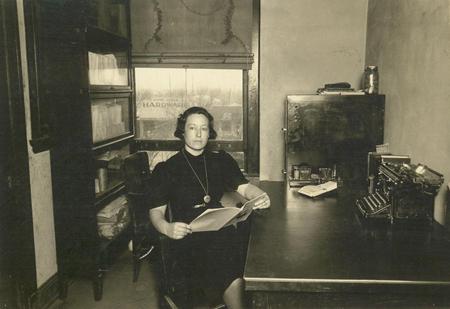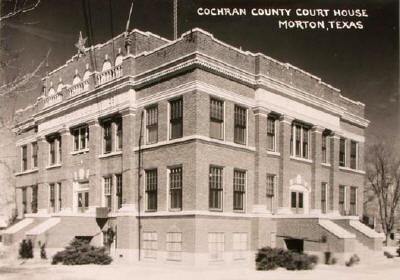|
|
|
This
seldom-mentioned state service which has undergone several changes
in name over the years is frequently omitted from local newspaper
coverage. The organization had its humble beginnings in Milam
County in 1912 when Edna Westbrook Trigg started teaching girls’
“tomato clubs.” The quaint name stats their original purpose – which
had been the canning and preserving of tomatoes.
Like the course of “home economics” that was once taught in high
schools across the country, the emphasis of home demonstration was
on homemaking skills. By-products of the meetings included lifelong
friendships and a good excuse to get away from home for a few hours.
Meetings were often held in community buildings, and many clubs
were given space in the county courthouse to conduct business.
Agricultural demonstrations in Texas had been introduced as early
as 1903, but in 1914 the U.S. Congress passed the Smith-Lever Act
which officially sanctioned “demonstration work” and allowed programs
to be funded by matching local money with state and federal funds.
After Mrs. Trigg's pioneering work in Milam
County, other female county agents were hired to work with the
rural female population. Vegetable gardening, canning, bread-making
and animal husbandry were typical topics for demonstration clubs.
By 1914, a Texas superintendent had been appointed, and topics expanded
to include sewing, “home improvement and management” and the somewhat
vague heading of “family living.”
During WWI emphasis
shifted to canning and preservation due to the food-conservation
programs that were then in place.
Post-war programs were under the direction of the Texas Agricultural
Extension Service. County agents increased during the 1920s and
in 1926 county home demonstration councils were established to coordinate
local membership with and statewide programs. That same year, county
agents started using the still-new radio to broadcast instruction
and techniques.
There were 152 clubs statewide in 1917, with a membership of just
under 2,000 women enrolled. By 1934 there were nearly 49,000 women
enrolled in 2,268 clubs on the county or community level.
|
 |
| Genevea Meadows
Essary, Cochran County Home Demonstration Agent, in her office in
the courthouse
at Morton. Note: My mother [photo above] was the home demonstration
agent in Morton,
Texas, from 1937-1939. She married my father in 1939, and then
taught school. Morton
was also my home until 1949.” – Gary Essary, Zionsville, Indiana |
 |
|
In 1937 more
than 14,000 rural Black women were home demonstration agents.
For all the early successes, it wasn’t until WWII
when "victory gardens" and "victory canning" pushed membership in
home demonstration clubs to its zenith.
Besides the simple straightforward goal of production, classes also
emphasized results like the sense of well-being and stability that
a well-managed household provided.
Many agents had home economics or general teaching experience, but
found that they sometimes encountered resistance to their programs,
either in the form of county officials who downplayed the importance,
or locals who felt the money could be better spent on other projects.
After a majority of Texans moved to the cities after WWII,
membership underwent a decrease in membership.
The 1972 national meeting was held in Dallas
and in 1979 the name of the program became the Texas Extension Homemakers
Association with local participation referred to as “Extension Homemaker
clubs.”
In 1984 membership was reported to be 28,686. Emphasis shifted from
domestic skills to such issues as the “war on drugs” and safety
issues such as children's car seats.
The program was changed again in 1994 when it became the Texas Association
for Family and Community Education. Newer programs now include environmental
issues.
1994 membership was down to 12,000 statewide but this recent figure
now includes male enrollment.
© John Troesser
"They shoe horses,
don't they?"
November
24 , 2007 Guest Column
|
|
|
